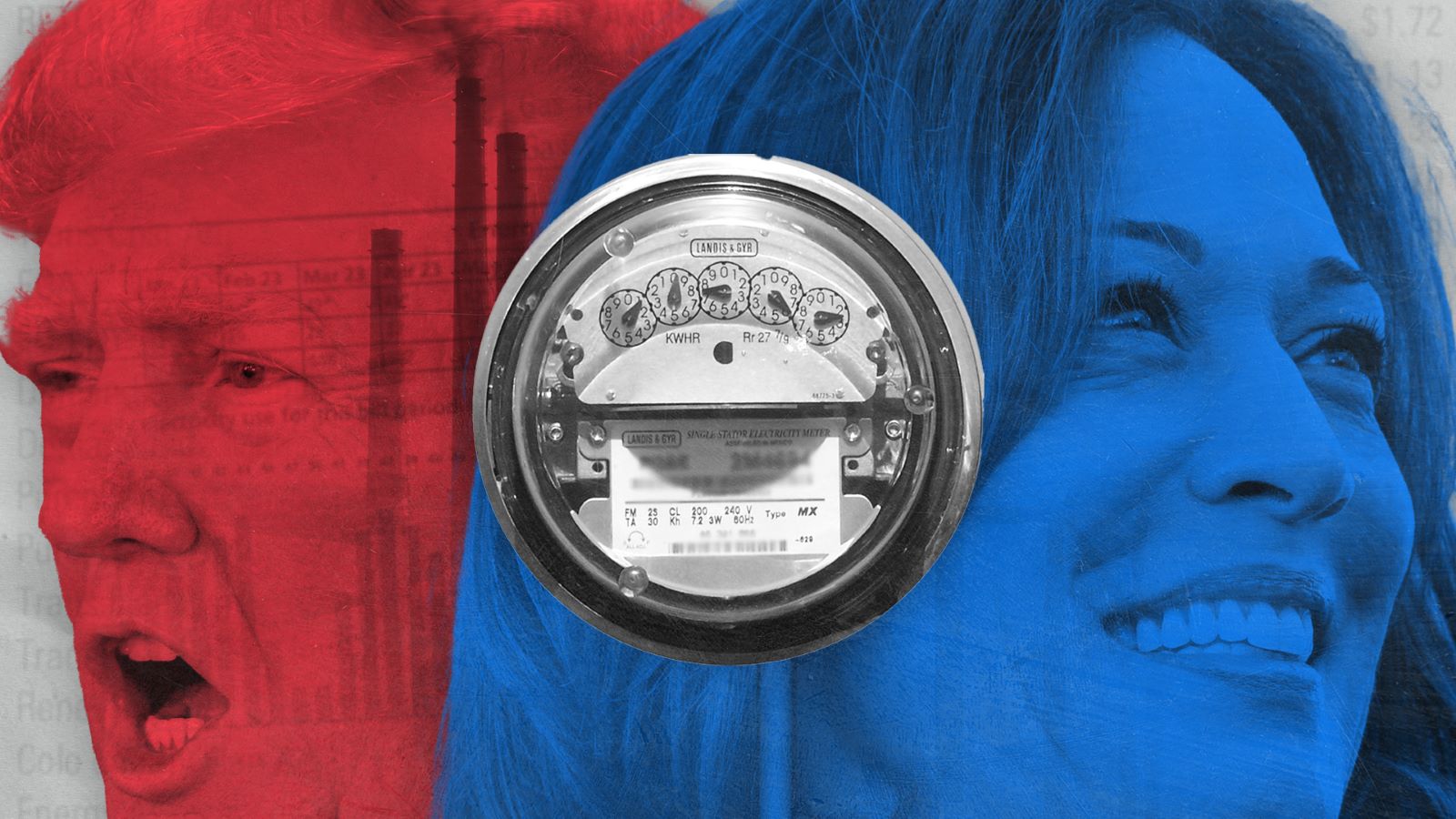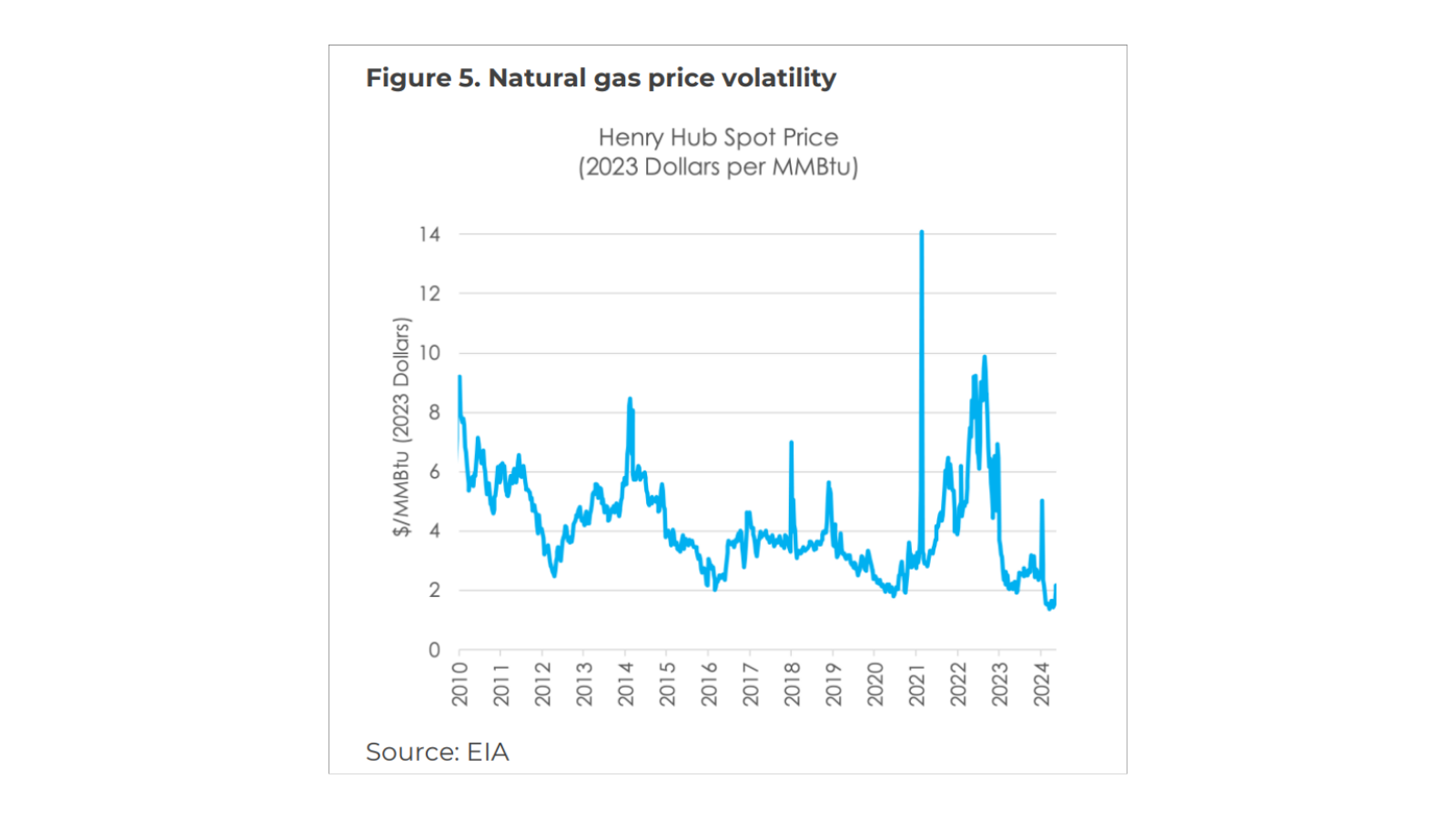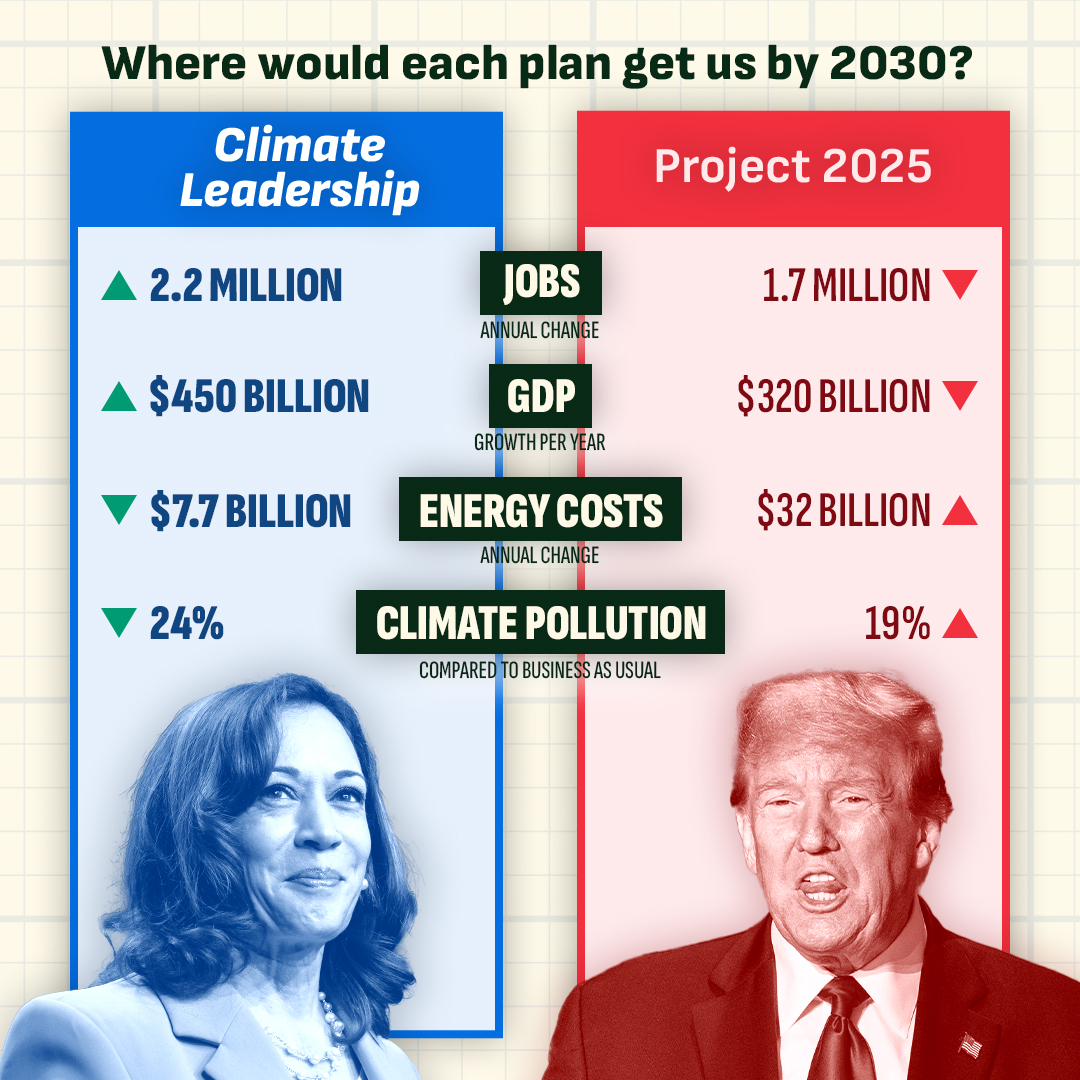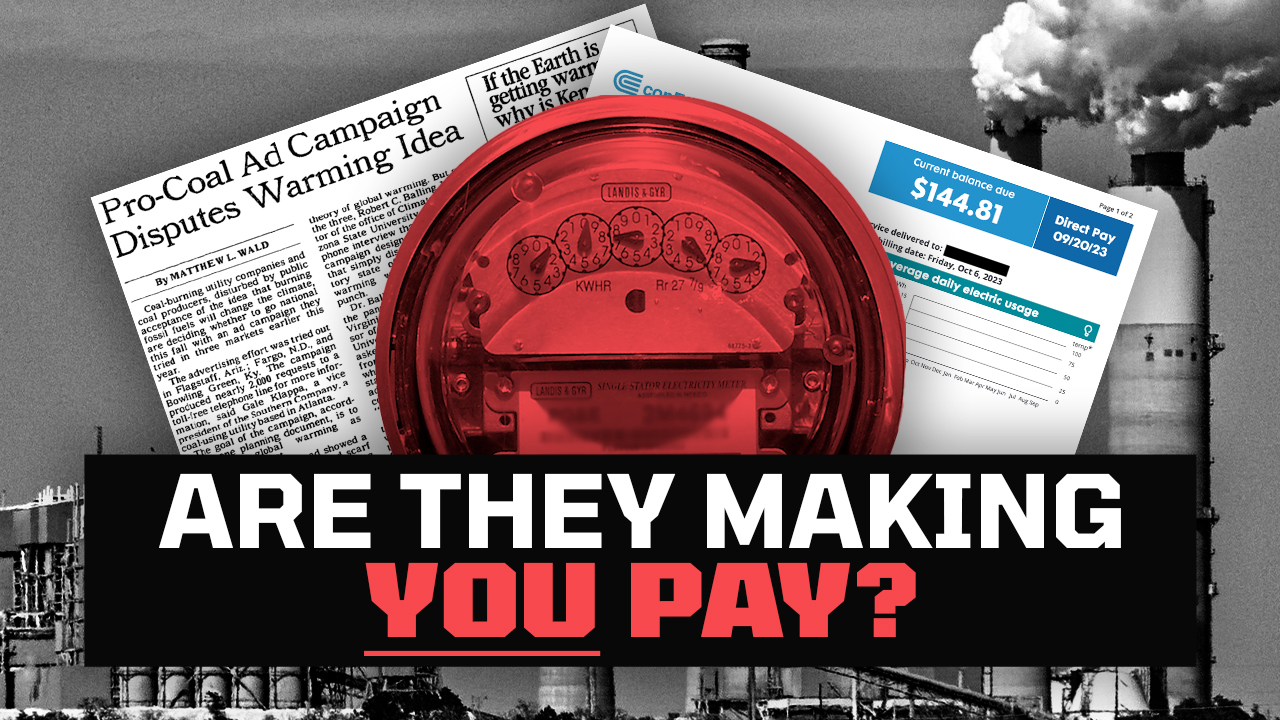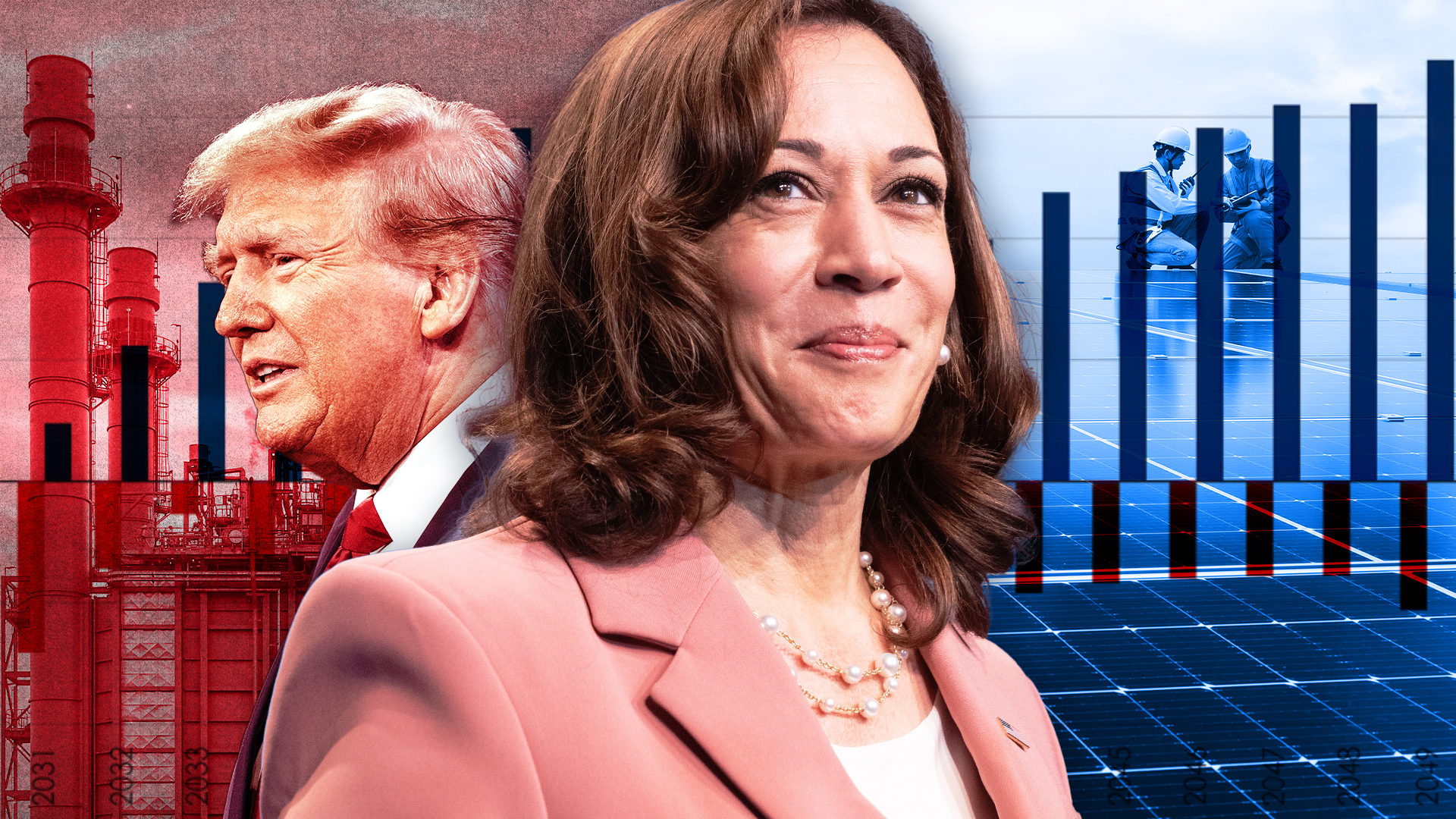The climate crisis isn't just an environmental issue; it's an economic issue, hitting families the hardest. So, it’s unsurprising that rising energy costs and climbing monthly electricity bills are top-of-mind for voters just weeks away from a pivotal election. Misinformation is rampant, but there’s only one presidential candidate with a plan that actually lowers energy costs for Americans nationwide.
Vice President Kamala Harris just released her economic plan for all Americans, which tackles rising energy costs by investing in the cheapest forms of electricity in human history—renewables. This plan is built on a record of success. Harris cast the deciding vote on the Inflation Reduction Act (IRA), the biggest climate and clean energy bill in American history, one that has already boosted American manufacturing, jobs, and energy independence.
The IRA is projected to save American households hundreds of dollars every year. If we keep allowing the IRA to do what it was designed to do, while coupling it with additional smart clean energy and housing policies, we’ll see the energy savings families want and need. By contrast, Trump’s Project 2025 agenda, which calls for ending clean energy subsidies and relying on fossil fuel extraction, is projected to increase energy costs by $32 billion per year. His plan would wreak havoc on households, especially those in energy-burdened and low-income communities, along with crucial swing states like Georgia, Pennsylvania, Michigan, and Wisconsin.
What’s not driving up prices? Affordable, reliable clean energy. Renewable energy sources like wind and solar are cheaper than fossil fuels, full stop. Regardless of what Republican politicians and fossil fuel lobbyists might mislead you to think, clean energy is the key to a future with lower energy costs, grid reliability, and energy independence. And a Harris-Walz administration will get us there. Democrats have a winning message on energy prices: low-cost clean energy.
Clean Energy Is the Solution to Bringing Lower Costs
We’ve passed a “tipping point” in the last decade where renewables have become the cheapest source of electricity around. And it’s not even close. It simply makes no sense to turn back to yesterday’s technology when we have cleaner, cheaper, reliable options ready to deploy.
Building new wind and solar projects is cheaper than running 99 percent of existing coal plants. It’s also cheaper than 99 percent of proposed gas plants around the country. It helps when your fuel—in this case, wind or sunshine—is effectively free. This affordability, whether by swapping out coal or gas with clean energy, then gets passed on to customers, with every megawatt-hour of onshore wind used instead of a gas plant saving customers $26 (PDF).
The IRA and other climate policies have started a self-propelling positive feedback loop, and tax credits and clean energy subsidies are expected to cut energy bills for every household by $170 to $220 each year. The proof is in the states that have already seen clean energy for the winner it is: States that have deployed the most wind and solar have seen energy prices lower than economy-wide inflation.
What Causes Energy Bills to Go Up?
The true blame for higher electricity costs falls squarely on volatile gas prices, costly, aging grid infrastructure, climate-fueled disasters threatening power infrastructure, bad investments in outdated fossil fuel power plants, and a self-interested utility business model. There is no doubt that profit- and shareholder-driven utilities have been jacking up the rates they charge customers; they even go so far as to bill customers for their own nefarious fossil fuel lobbying efforts.
